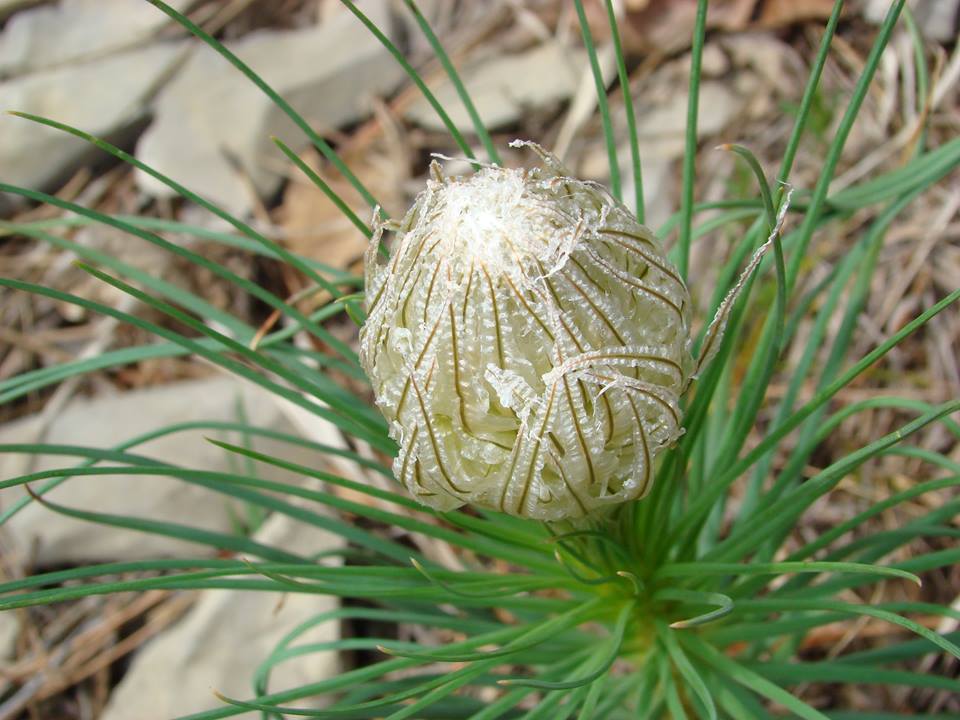Asphodeline taurica: Red Data Book of Armenia

EN B 1 ab(i,ii,iii) + 2 ab(i,ii,iii)
Category. Endangered species. It grows in two floristic regions though it is rather abundant in the habitats. The extent of occurrence is less than 5000 km2 , the area of occupancy is less than 500 km2. It was included in the first edition of the Red Data Book of Armenia under Category 2: Rare species. It is not included in the Annexes of CITES and that of the Bern Convention.
Description. Perennial rhizomatous herb. Stem 60–80 cm. Leaves numerous, amplexicaulous, densely covering the stem up to inflorescence, with broad membranous margin. Inflorescence a long dense raceme. Bracts large, membranous, silvery white, with elongate–acuminate apex, obvoluting the flowers. Flowers white. Capsule ovate or globular, 12–15 mm long; valves irregularly rugose. Seeds grayish–brownish, 6 mm in diam.
Distribution. In Armenia it occurs in Shirak (Djadjur mountain pass, Bagravan) and Lori (surroundings of Spitak town) floristic regions. EOO is 820 km2, AOO is 28 km2, the number of locations is 4. Besides Armenia the species also grows in Ciscaucasia, Circassia, South–West Transcaucasia, the Crimea, the Balkan Peninsula, and West Syria.
Ecological, biological and phytocoenological peculiarities. Grows in middle mountain belt, at the altitudes of 1200–2000 meters above sea level, on dry stony places, steppes, meadow–steppes, in steppe shrubs. Flowering in June, fruiting from June to July.
Limiting factors. Restricted extent of occurrence and area of occupancy, loss/degradation of habitats caused by land development.
Conservation actions. No conservation actions. Necessary: establishment of specially protected nature area on Shirak mountain range, monitoring of the state of the populations.
Suggestions
 The Ministry of Environment sent a letter international partners to draw their attention to the real danger of environmental disasters as a result of Azerbaijan's large-scale aggression towards the territory of Armenia
The Ministry of Environment sent a letter international partners to draw their attention to the real danger of environmental disasters as a result of Azerbaijan's large-scale aggression towards the territory of Armenia
 Vicia pisiformis: Red Data Book of Armenia
Vicia pisiformis: Red Data Book of Armenia
 Vavilovia formosa: Red Data Book of Armenia
Vavilovia formosa: Red Data Book of Armenia
 Trigonella capitata: Red Data Book of Armenia
Trigonella capitata: Red Data Book of Armenia
 Trigonella astroides: Red Data Book of Armenia
Trigonella astroides: Red Data Book of Armenia












